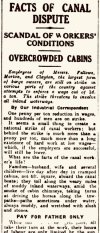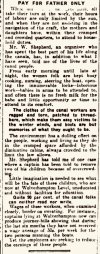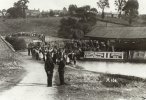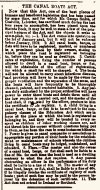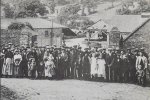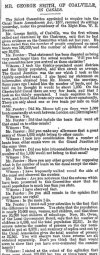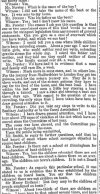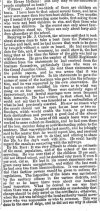Pedrocut
Master Barmmie
There are other threads concerning Birmingham boatmen, but not a general one about the conditions of work.
This picture from the British Waterways Board and featuring in the book “The great days of the canals” by Burton, Anthony (1995) shows a group of Birmingham boatmen in 1895 who were either on reduced or no pay when the canal froze. Sometimes they were reduced to collecting on the streets.
The Birmingham Daily Post, 9th February 1895…
“During yesterday a number of frozen out boatmen paraded the streets with a boat upon a cart. They were sent out from the Boatmen's Hall, and all money collected is distributed by the officials.”
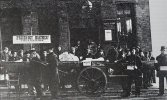
This picture from the British Waterways Board and featuring in the book “The great days of the canals” by Burton, Anthony (1995) shows a group of Birmingham boatmen in 1895 who were either on reduced or no pay when the canal froze. Sometimes they were reduced to collecting on the streets.
The Birmingham Daily Post, 9th February 1895…
“During yesterday a number of frozen out boatmen paraded the streets with a boat upon a cart. They were sent out from the Boatmen's Hall, and all money collected is distributed by the officials.”

Last edited:

